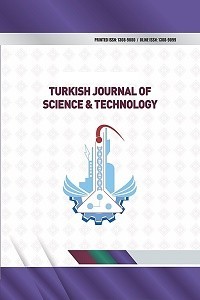Araştırma Makalesi Yazımında GPT-3 Yapay Zeka Dil Modeli Değerlendirmesi
Yapay zeka dil modelleri, ChatGPT, Doğal dil işleme, Akademik yazım araçları.
Evaluation of GPT-3 AI Language Model in Research Paper Writing
AI language models, GPT-3, Natural language processing, Academic tools,
___
- McCulloch W S, Pitts W. A logical calculus of the ideas immanent in nervous activity. Bulletin of Mathematical Biology 1943; 5: 115-133.
- LeCun Y, Bottou L, Bengio Y, Haffner P. Gradient-based learning applied to document recognition. In: IEEE 1998; 86(11): 2278-2324.
- Krizhevsky A, Sutskever I, Hinton G E. Imagenet classification with deep convolutional neural networks. Communications of the ACM 2017; 60(6): 84-90.
- Devlin J, Chang M W, Lee K, Toutanova K. Bert: Pre-training of deep bidirectional transformers for language understanding. arXiv preprint 2018; arXiv:1810.04805.
- Yang Z, Dai Z, Yang Y, Carbonell J, Salakhutdinov R R, Le Q V. Xlnet: Generalized autoregressive pretraining for language understanding. Advances in neural information processing systems 2019; 32.
- Brown, T., Mann, B., Ryder, N., Subbiah, M., Kaplan, J. D., Dhariwal, et al. Language models are few-shot learners. Advances in neural information processing systems 2020; 33: 1877-1901.
- Radford A, Wu J, Child R, Luan D, Amodei D, Sutskever I. Language models are unsupervised multitask learners. OpenAI blog 2019; 1(8): 9.
- LeCun Y, Bengio Y, Hinton G. Deep learning. Nature 2015; 521(7553): 436–444.
- Bengio Y, Courville A, Vincent P. Representation learning: a review and new perspectives. In: IEEE transactions on pattern analysis and machine intelligence 2013; 35(8): 1798–1828.
- Goodfellow I, Bengio Y, Courville A. Deep learning 2016; MIT press.
- Esteva A, Kuprel B, Novoa R A, Ko J, Swetter S M, Blau H M, Thrun S. Dermatologist-level classification of skin cancer with deep neural networks. Nature 2017; 542(7639): 115–118.
- Vaswani A, Shazeer N, Parmar N, Uszkoreit J, Jones L, Gomez A N, et al. Attention is all you need. Advances in neural information processing systems 2017; 30.
- Hochreiter S, Schmidhuber J. Long short-term memory. Neural computation 1997; 9(8): 1735-1780.
- Transformer G G P, Thunström A O, Steingrimsson S. Can GPT-3 write an academic paper on itself, with minimal human input? 2022
- ISSN: 1308-9080
- Başlangıç: 2009
- Yayıncı: Fırat Üniversitesi
Ayşe EREN, Şule İNCİ, Kochar Kh. SALEH, Sevda KIRBAĞ, Kemal GÜVEN
Sulu Çözeltide Arseniğin Nanokompozit Tabanlı Elektrokimyasal Algılanmasının Geliştirilmesi
Orman Yangınlarının Tespiti İçin İnsansız Hava Aracı Geliştirilmesi
Barış Mert KADIOĞLU, Seçil KARATAY, Yücel ÇETİNCEVİZ, Faruk ERKEN
Post-LASSO Yönteminde İkinci Aşama Tahmin Edicisinin Model Performansına Etkisi
Kaotik Sistemler Tabanlı Kriptografik Tasarımlar için Bir Analiz Aracı
Farklı Tip Burun Konilerinde Çentikli Delta Kanat Roketlerin Uçuş Performansının İncelenmesi
Cihan ÖZEL, Cevher Kürşat MACİT, Meral ÖZEL
Türkiye Ar-Ge ve İnovasyon Haritası: Hibrit Model Yaklaşımı
Araştırma Makalesi Yazımında GPT-3 Yapay Zeka Dil Modeli Değerlendirmesi
Oğuzhan KATAR, Dilek ÖZKAN, Gpt -3, Özal YILDIRIM, U Rajendra ACHARYA
